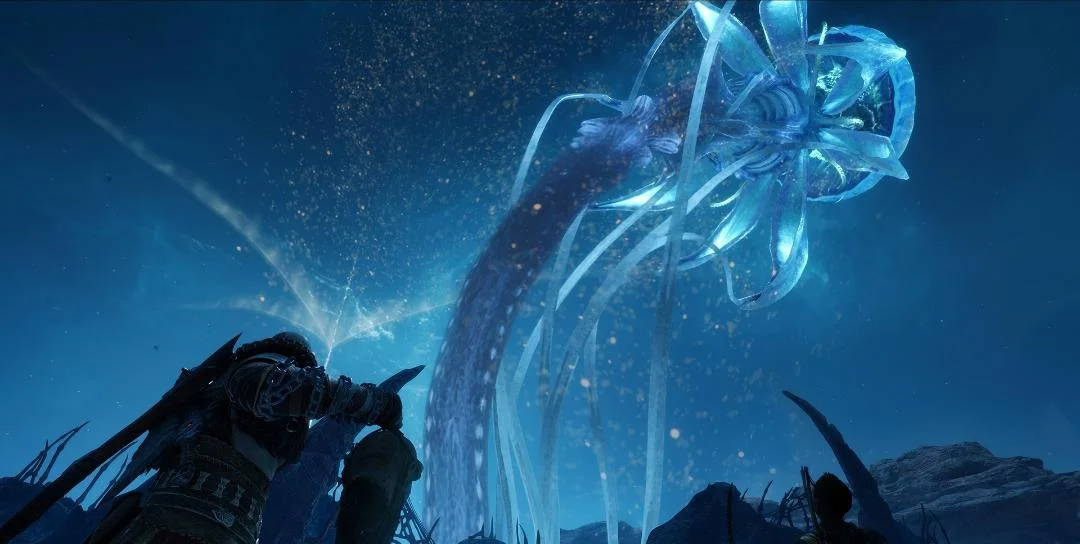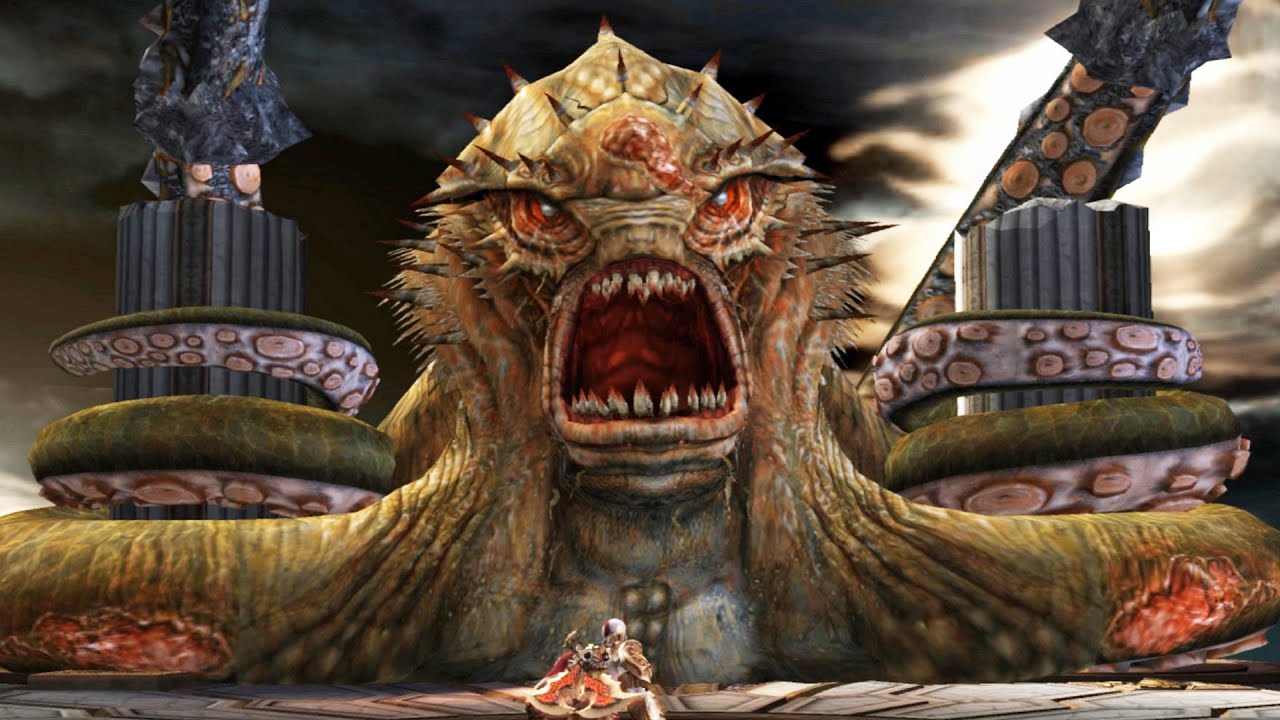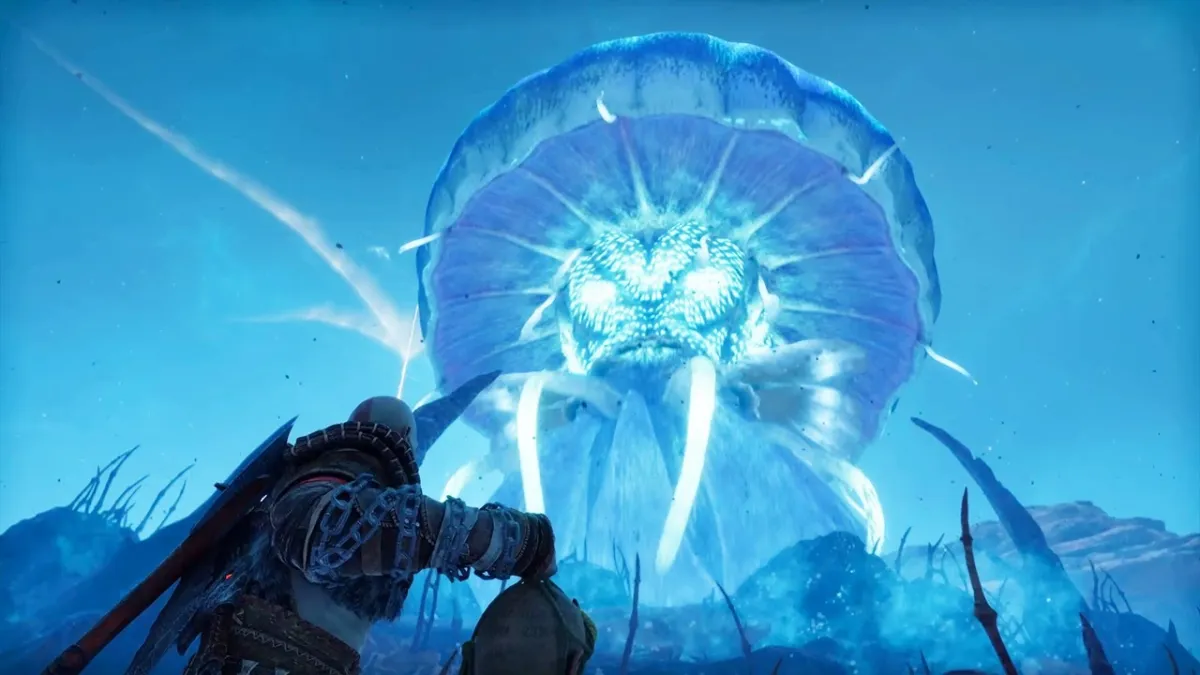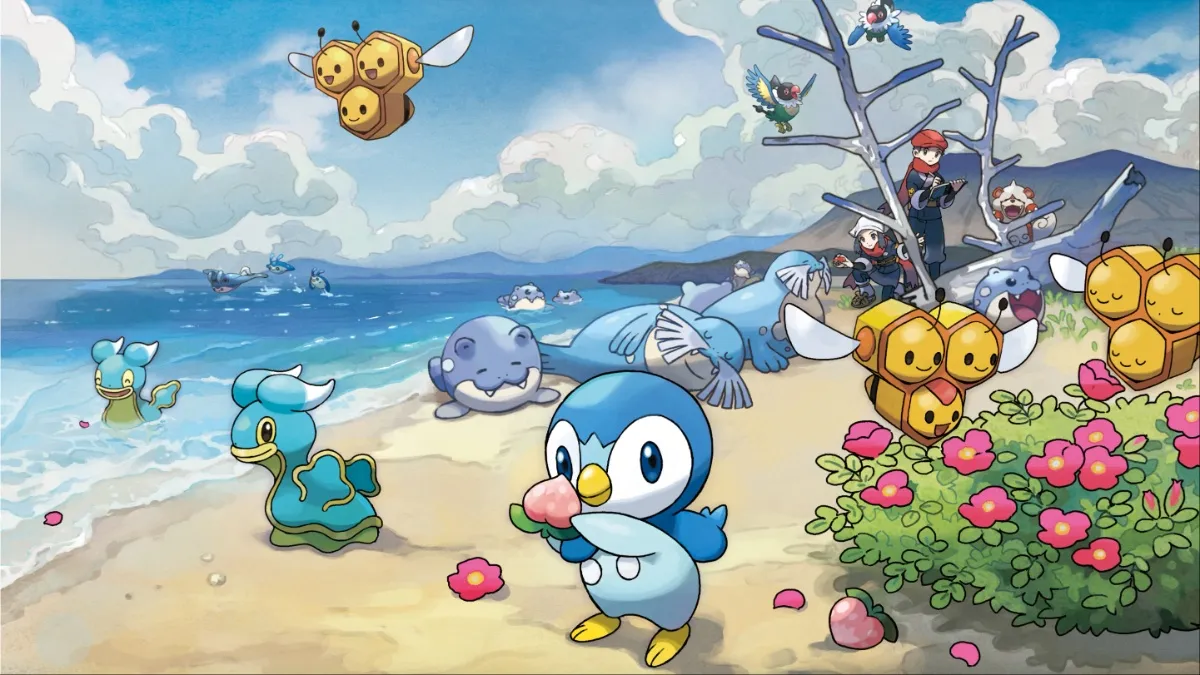This article contains spoilers for God of War (2018) and God of War Ragnarok in its discussion of the Hafgufa jellyfish.
One of the most striking images from God of War Ragnarok isn’t even on the main path, but rather an early optional quest, or “favor” in Alfheim. In the Song of the Sands favor you free a massive jellyfish creature they call a Hafgufa, which has trapped itself in dark elf hive matter while burrowing underground. After freeing it, you’ll be rewarded with XP and the gorgeous image of the huge creature floating around the sky. Mimir describes the creature as “the largest bloody Hafgufa I’ve ever seen,” implying their titanic nature is a bit of an anomaly. Most players will be motivated to free the creature soon because most of Alfheim is covered in violent sandstorms where you can hardly see in front of you.
While at face value, the quest is a pretty standard dungeon crawl with a few axe-toss puzzles and combat encounters, it comes together as a much more compelling sum of its parts due to both great writing and visual spectacle. The dialogue interactions between Kratos and Atreus, played brilliantly by Christopher Judge and Sunny Suljic, are a great example of how the first Hafgufa favor is elevated. Hearing Atreus question why they’re going on this journey and slaughtering light and dark elves yet again, only to realize that Kratos was doing it just to spend some time with his son, is sweet but a little heartbreaking. It shows that Kratos does have his fated death on his mind and wishes to make good memories with Atreus, but his terminally stoic nature also prevented his son from fully understanding and engaging with the moment until the very end.
And what do you know, this sidequest was so nice, they made it twice! You eventually find another sandstorm-ridden area of Alfheim later in the story, and Kratos ventures into another creepy elf hive to free one more huge cyan invertebrate from its restraints. Seeing the two Hafgufa reunite and sing together is a beautifully bittersweet moment, especially since we learn from prior dialogue that they will perish after they mate and “pass on their light to their children” as Freya puts it, which does indeed happen if you see the second favor through.

Interestingly, the Hafgufa does exist in Norse mythology, but it was interpreted in a unique way for God of War Ragnarok so it could touch on themes more relevant to the game. Don’t worry, this isn’t some sort of gotcha for an “inaccuracy” or attempt at a mythical Mythbusters episode. But looking at these changes gives us a small glimpse into the process of adaptation and how artists blend different visual inspirations and themes into a compelling new whole.
The name “Hafgufa” crops up in a few Norse cultures with different forms, including the Old Norse text the Prose Edda, thought to be compiled by Snorri Sturluson around the 13th century in Iceland. It names the Hafgufa in a list of whale-like creatures but doesn’t have much more description. It was also mentioned in the Orvar-Odds saga from Iceland as a creature so large it can change the tides by sticking its snout out of the sea and waiting for creatures to enter, bearing some similar imagery to the Greek whirlpool monster Charybdis.
The term also cropped up in a 13th-century Norwegian philosophical text called King’s Mirror (or Konungs skuggsjá), which is written in the style of a king instructing his heir and son. It’s described as a gigantic fish that can be mistaken for an island by unwitting sailors, but that description can be applied to other creatures and one, the Lyngbakr, also appears in Ragnarok. The king in this text even theorizes that only two Hafgufa exist in the world and may be infertile, an interesting connection to the Hafgufa in Ragnarok.

The Hafgufa has also been associated with the well-known mythological beast the Kraken, with some translators translating Hafgufa to Kraken in their interpretations of these texts. Sure, Kratos already took down a Kraken in God of War II, but it’s still cool to see that there are differing interpretations of this sea monster even back in the day. Fun fact I learned in research: One version of the Hafgufa was so large it could swallow whales and was said to belch out its own vomit to use as bait to attract more prey for it to swallow… gross! I saw enough titanic sea creature bile when I had to row through the World Serpent in God of War 2018, thank you very much.
This take on the Hafgufa made me think of the real-life “immortal jellyfish,” or Turritopsis dohrnii, which was discovered in the late 19th century. When threatened or starving, these jellies can revert back to their larval polyp stage, which will eventually grow back into a genetically identical version of the very same threatened jelly. It begs a philosophical question of whether this form of clone-rebirth constitutes actual immortality, an interesting comparison to the immortal but all-too-humanly fallible gods we play as and fight against in these games.
The Hafgufa story in God of War Ragnarok, especially how it ends with both of them disappearing from the world for the sake of their offspring, is a great microcosm for the discussions on the nature of fate happening in the story. We may see ourselves above these base natural instincts, but even the gods in the story, like Freya who directly says she would make the same sacrifice, end up going down similar paths regardless of where they see themselves on the food chain.







Published: Feb 10, 2023 02:10 pm